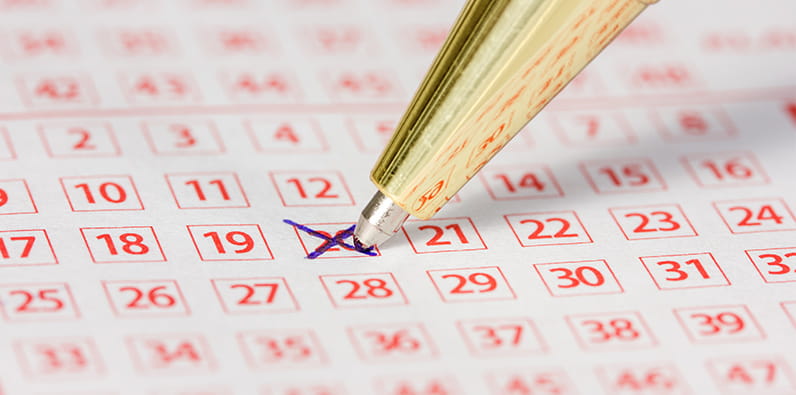Types of Spanish Lottery
One of the most famous Spanish lotteries is the Spanish Christmas lottery. This tradition started in the distant 1812, and it is considered one of the biggest lotteries in the world. In the following section, we will examine each type of lottery one by one. Right after, you will learn more about the Spanish lotteries’ history and how they developed throughout the centuries.
Spanish Christmas Lotteries: Loteria de Navidad, Loteria Del Nino
As we mentioned previously, the Christmas lottery or more specifically the Loteria de Navidad was organised for a first time in 1763 by King Carlos the 3rd. The draw itself is just before Christmas, and some say its point is to set the beginning of the festive holidays. The second Spanish lottery that we placed in this category is the Loteria Del Nino or “the boy lottery” which refers to the newly born Jesus. This draw is always several days after new years eve. Let us explain in more detail.
Loteria de Navidad
This Spanish lottery is one of a kind and currently super popular all around the world. Many people in the UK and Europe participate every year because the opportunity is simply life-changing. The prize could go above €2 billion, and yes you didn’t misread, it’s billions! The draw is always on 22 December, and it mark s the start of all Christmas and new years eve celebrations. Interestingly, this tradition survived through the civil war and many other obstacles during the centuries.
Loteria Del Nino
Loteria Del Nino is a relatively smaller raffle with an overall prize up to €700 million. The date of the draw is always 6 January. It is in honour of the Los Rayes festival. It was organised for the first time in 1941, and it immediately became the second largest Spanish lottery.
La Primitiva
La Primitiva is the first form of the national lottery in Spain which started with Carlos III, but back in 1763 it was known as Lotería por Números and in 1812 was renamed to La Primitiva. Unfortunately in 1862, the Spanish lottery was banned until 1985 when it was reinstated again. As a game, La Primitiva is a 6/49 draw or with other words you need to guess 6 from a total of 49 numbers plus one additional 0-9 pick called reintegro – Refund number. It is used to reveal other compensational 2nd and 3rd division incentives. The draws are twice a week, while the prizes start from €5 million.
El Gordo
El Gordo, also known as El Gordo La Primitiva was released in 1993 or 8 years after the restart of the original Loteria La Primitiva. Like the original version, El Gordo La Primitiva is a numbers draft that was initially a monthly one, but thanks to the huge interest is now every Sunday. With El Gordo, you need to select five numbers from 1 to 54 plus one additional reintegro number 0-9. To win the jackpot, you need to match all five numbers and the refund/reintegro number. Even if you don’t win anything, the reintegro number may help you retrieve the amount given for the ticket itself.
Bonoloto
Bonoloto was initiated in 1988 by the Loterías y Apuestas del Estado. This is a low-cost Spanish lottery where the draws are daily (excluding Sunday), the tickets are cheap consequently the prizes are small. It is a 6/49 format with one additional 7th number called Complementario (complimentary) used for secondary prizes. To win the Bonoloto jackpot, you need to guess only the six original numbers.
EuroMillions Spain
EuroMillions was initiated by France and introduced to British, French and Spanish lottery fans in 2004, but by the end of that year Austria, Portugal, Switzerland, Belgium and others joined too. The standard price per ticket is €2.50, while the format is 5/50. You need to select five numbers from 1 to 50 plus two other lucky stars from a pool of 12 numbers. They can assist you in winning various monetary prizes different than the jackpot.

EuroJackpot Spain
Eurojackpot was launched in March 2012, by the end of the year the number of countries participating was already increased to 19. Germany and Denmark manage this Euro lottery. The drafts are weekly with jackpots over €10 million. It is important to mention that there are 12 different tiers of prizes. The format is 5/50 with two complementary numbers from 0 to 10 which you pick separately. If you look at the latest rewards, they usually vary between 10 and 90 million Euros.
Additional Information: Spanish Lottery Results, Odds & Taxes
Unfortunately, there isn’t an official website where you can check all Spanish lottery results. But you can still find them in most of the newspapers, and news websites, have that in mind. What are the odds and which type of Spanish lottery gives you the best chances of winning?
Well, it is hard to say because this really depends on the price of the ticket and the amount of the jackpot. Hypothetically, the highest chance of winning is with Bonoloto because the jackpot odds are ≈1:13,983,816. Yes, but the prizes there are way smaller than La Primitiva or El Gordo where the Spanish lottery odds are ≈1:139,838,160 and ≈1:31,625,100. Here are the latest and largest Spanish lottery jackpots sorted by year:
| Lottery | Prize | Date |
|---|---|---|
| EuroMillions Spain | €200 million | 11 December 2020 |
| EuroJackpot | €92 Million | 23 August 2019 |
| BonoLoto | €7.6 million | 11 December 2018 |
| La Primitiva | €101.7 million | 15 October 2015 |
| El Gordo | €33 million | 14 July 2011 |
Now to the question that many of you will ask: Can foreigners play Spanish lottery? The answer is: Yes, they can, but the taxation is slightly different. There are two tax bands for Spanish citizens – tax-free below €4000 and 20% tax on everything above that. For foreigners, this same tax of 20% applies to all winning above €2500. You should also know that you can play Euro lotteries at the best online lottery sites.
History of the Spanish Lottery
Carlos the 3rd is the king who established the first form of Spanish national lottery in 1763 named “Lotería por Números”. It was created with a charity purpose and gave the ordinary people a life-changing opportunity. This is literally the first version of La Primitiva. The Loterías y Apuestas del Estado (national royal lottery) is the state-owned company managing the Spanish lotteries. From 1812 the same establishment took control over the most famous Spanish Chrismas lottery, also known as Loteria de Navidad. They also released a new game called Modern Lottery in 1812.
After the Spanish lottery restrictions accepted in 1862 La Primitiva was banned, leaving the Spanish players with only three options: Modern Lottery, the special Loteria De Navidad and Loteria El Nino. Over a century later, in 1985, the demand for more Spanish lottery games increased and created the necessity to bring La Primitiva back in the game. After the massive success of it, another one called Bonoloto was released in 1988. Several years later, in 1993, one more Spanish lottery was created – El Gordo.
After the vast technical development and the European Union’s growth, another two lottery games were organised in 2004 and 2012 but this time for all European citizens. Euromillions and Eurojackpot are two massive lottery games with players from over 20 countries, which guarantees enormous jackpots.
FAQ
This article was complex and full of details. For that reason, we decided to list the most frequently asked questions regarding the Spanish lottery and its variations. To explore every question’s extensive answer, you should click on the jump button and land directly on it.
